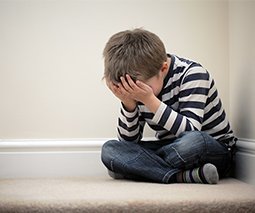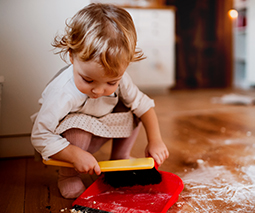“Go to your room!”: What this discipline method teaches kids about emotions

It’s one of the oldest and most common discipline methods, but does sending children to their room actually work? Not really, say the experts, but even worse, it could also be teaching them to suppress emotions instead of learning how to deal with them.
The new spanking
These days, not as many parents use physical punishment when children misbehave. Barking the order, “Go to your room!” is the preferred option instead (along with naughty corners and other types of time-out). Interestingly, these disciplinary methods go way back, becoming popular in the ’50s and ’60s when a lot of children began to have their own bedrooms. An even earlier reference than this can also be found in an 1841 novel.
Why parents do it
The core idea behind sending a child to her room is so that they can sit in solitude away from others, calm their emotions down, but also have a good think about their actions. It’s also considered a much better option than smacking, hitting, shouting and yelling; and allows parents to handle a difficult situation with a consistent ‘one size fits all’ approach without actually having to deal with any of the negative or uncomfortable behaviours their child has shown.

The negative impact
However, experts believe it can send the wrong message to kids about their behaviour, long-term. According to Laura Markham, a psychologist from Aha! Parenting, even though children may emerge from their rooms calmer, they have missed out on an opportunity for development.
“Under anger, there’s always fear or hurt or powerlessness,” she says (as reported by The Atlantic). And so when you send your child to their room, you’re also sending the message for them to suppress these underlying emotions until they’re ready to act with the world again, instead of expressing why they feel that way and getting to the bottom of the problem.
Read more about discipline for children:
- Why the time-out discipline method might not be working with your toddler
- Should we let children learn right and wrong on their own?
- Timeout chair for little girls who are too “spicy” sends wrong message
Is it actually a punishment?
When you consider the fact that children’s bedrooms are often filled with toys, books, crayons and possibly even electronic games and TVs (once they get older); it makes you wonder if sending a child to her room even counts as punishment? In time, she’ll no doubt prefer to be left alone to have fun with her toys instead of being asked to ‘face the music’ and explain why she did something wrong. It also makes it easier for your child to avoid having to apologise or do chores to make up for what she’s done.
Keep the bedroom a safe place
And when it comes to little kids, as children’s sleep expert Tizzie Hall says, sending a child to the place where they sleep when they’re naughty could create a negative association to the room and end up leading to bedtime refusal or issues with sleep. And no one wants that!

So what can you do instead?
According to Laura Markham, the best option when it comes to discipline is for parents to talk things through with their child.
“When the child feels heard by us, then they will begin to take a deep breath and get under control,” Laura explains. An acknowledgement of her feelings combined with an explanation, allows more vulnerable feelings and insights to emerge – which doens’t happen when children are sent to their room.
Not so naughty?
Also, when it comes to toddlers, often they’re not actually being naughty and don’t deserve banishment – they’re simply learning about the world around them while struggling to handle their emotions. Take the time to have a conversation (even if you have to wait a few moments for them to calm down) and try to understand your little ones motives (they could just be hungry!). You’ll have a better chance of promoting appropriate behaviour in the long-term while also letting her know it’s okay to express her feelings.
What discipline methods work with your children? Share your tips with us on our Facebook page.









